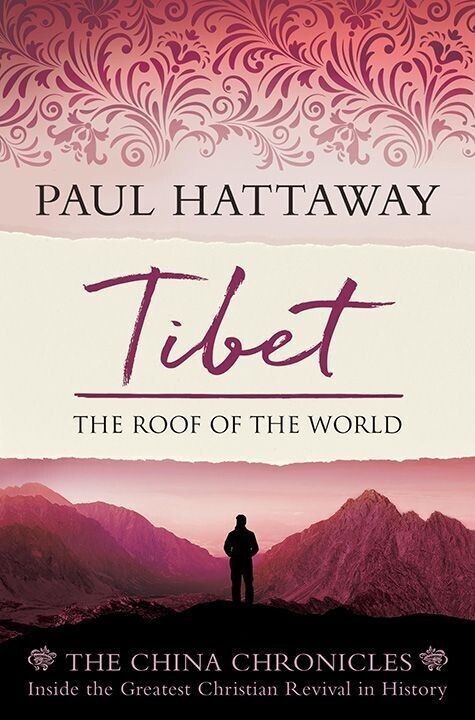Sundar Singh
The Apostle with the Bleeding Feet
Sundar Singh, the son of a wealthy Sikh landowner, was born in north India in 1889. Considering his background, nobody would have predicted that this man would one day be remembered as the most famous Indian evangelist of the early 20th century. As a young man, Sundar's mother took him every week to sit at the feet of a sadhu—an ascetic Hindu holy man—who lived in a remote forest. When their son was old enough, his parents wanted Sundar to have the best education, so they sent him to a Christian school run by missionaries so that he could learn English. However, when Singh was 14 his mother suddenly died, plunging the teenager into deep despair and enmity against anything to do with religion. He began to hate the missionaries, and openly "persecuted their Christian converts, and ridiculed their faith. In final defiance of their religion, he bought a Bible and burned it page by page while his friends watched. The same night he went to his room determined to commit suicide on a railway line. However, before dawn, he wakened his father to announce that he had seen Jesus Christ in a vision and heard His voice. Henceforth he would follow Christ, he declared."
Sundar later shared what happened on the night when he decided to kill himself:
"Jesus came into my room. As I was praying for the last time, a bright cloud of light suddenly filled the room…and out of the brightness came the face and figure of Jesus. He spoke to me…. 'How long will you persecute Me? I have come to save you. You were praying to know the right way; why do you not take it? I am the Way.' He spoke in Hindi, and He spoke to me."
Sundar's family did not share the excitement of his new faith. His enraged father, Sher Singh, held a 'farewell feast' where he publicly disowned Sundar, pronouncing him "dead." Several hours after the feast Sundar became violently ill, and he realized he had been poisoned by his own family. He rushed to a nearby Christian hospital, and his life was spared.
On his sixteenth birthday, Sundar was publicly baptized at Simla in north India. A year later, in October 1906, he shocked everyone by appearing in a yellow robe and turban—the dress of a sadhu. He declared: "I am not worthy to follow in the steps of my Lord, but, like Him, I want no home or possessions. Like Him I will belong to the road, sharing the sufferings of my people, eating with those who will give me shelter, and telling all men of the love of God."
Sundar's zeal for the Lord soon became legendary. He was known to pray for several hours each day and to fast for weeks at a time. He took a vow of poverty and decided to hold nothing back from the cause of Christ. His travels took him not only to Hindu, Muslim and Buddhist settlements throughout the Himalayas, but also to Europe, America, Australia and various Asian countries, where he invariably spoke to large audiences. In all the places he visited, Sundar wore the garments of a sadhu, and Christians gave him the nickname, "the Apostle with the Bleeding Feet."
On many occasions he was arrested, beaten, and stoned. He faced incredible hardship, yet he carried on, a trophy of God's grace in one of the harshest spiritual climates in the world. Sundar Singh had numerous admirers, but also many critics. For many of the missionaries in India, his ways were just too radical to embrace. Those who enjoyed safe Christianity felt threatened by the intensity of his commitment and methods of operation. At one stage, missionaries persuaded Sundar to enroll at a Bible college to be "equipped for the ministry." He graduated and was ordained, but in 1911 he had a change of heart, handed back his preacher's license, and returned to the simple life of a sadhu.
Called to Tibet
The mysterious land of Tibet had attracted Sundar since he was a young boy, and he made his first preaching trip there in 1908, after spending some time learning basic Tibetan in the town of Poo, 8 miles (13 km) from the Tibet border, where the Moravian pioneer Edward Pagel and his wife had first settled down almost 60 years earlier.
In 1912 Singh decided to preach the gospel for several months each summer in Tibet, and Tibetan areas in today's Nepal and north India. He encountered much opposition in those dark places, and many attempts were made on his life. Three of the methods of torture employed by Tibetan lamas at the time included being sewn into a wet yak skin and left in the sun to be squeezed to death as the skin tightened; being smothered with cloth filled with leeches and scorpions to sting him and suck his blood; and being tied to a tree overnight as bait for wild animals.
Angelic Deliverances
Sundar Singh's accounts of his journeys into Tibet became very popular, and were widely distributed around the world. On several occasions he found himself in deep peril, only for God to send angels to rescue him.
Once, he came to a raging river that was too swift and deep to cross. Night was falling, and the sounds of wild beasts filled the nearby forests. He looked across the river and saw a man warming himself by a fire. "Don't worry, I will come and help you," the man shouted, and he fearlessly stepped into the water and came across to help the evangelist. As the man carried him on his shoulders to the other side, Sundar thought to himself, "He must live here, and so be used to crossing. I must tell him the Good News about Jesus.... On arrival at the other bank Sundar slipped off his rescuer's back, glanced around to get his bearings, then turned around to speak to him—but the man had disappeared. Neither was there any trace of the fire."
On another occasion, Sundar reached the Tibetan town of Razar, where he was arrested and sentenced to death by the head lama. Buddhists are forbidden to take life, so the lama had Sundar cast into a well, with the iron cover securely locked until he had perished. The smell of the putrid water made the evangelist's soul recoil:
"The bottom of it was covered with dead men's bones and rotting flesh, and the stench was almost overwhelming.... It was far worse than anything he had ever experienced before.... He was in that well for two days and nights, and on the third day he heard a sound above. The cover of the well was being removed and then a rope was let down and a voice told him to take hold of it.... As he breathed in the fresh air, he felt himself strangely revived....but he was alone. There was no sign of his rescuer….
The following day, back in the village, news reached the head lama that the sadhu who had been thrown down the well was out and about preaching. Again Sundar was brought before him. The head lama demanded to know how he had escaped, but all Sundar could tell him was what had happened, and that he had seen no one. Furiously, the lama asserted that someone must have stolen the key to the well, and ordered that a search be made for it. No one was more taken aback than he when it was eventually found on his own girdle."
Katar Singh
One of the more fascinating parts of Sundar Singh's ministry occurred as he traveled into Tibetan areas. On several occasions angry lamas shouted at him, "If you don't leave here we will treat you the same as we treated Katar Singh!" Sundar had never heard of such a person, and he began to piece together information. He learned that Katar Singh had been a young Sikh from the same part of India that Sundar hailed from. He too had converted to Christ and received a call to preach the gospel in Tibet, probably in the 1880s.
Katar Singh learned to speak Tibetan and made his way to the town of Tashigang, in today's state of Himachal Pradesh near the Tibetan border. He remained there for three months, preaching the gospel to everyone who would listen, but the head lama of the Tashigang Monastery threatened to kill him. Katar showed no fear, and told the lama that for him, to die was gain as he would receive his eternal reward and be with the Lord Jesus Christ forever. Katar Singh's response infuriated the head lama, who sentenced him to death. He was "taken up a hill and there sewn into wet yak skins and left in the sun. He said, 'I shall rise to heaven and be with my dear Lord.' Having sewn him into the wet yak skins the executioners left, but returned from time to time to see what effect it was having on him, and were amazed and puzzled when they found him singing and praying.... For three days they came and at last they saw him die—praying the Lord to receive his spirit and to forgive his enemies....
The chief secretary of the lama who had sentenced him obtained possession of Katar's New Testament...and was convinced of the truth, to the extent that not only did he put his trust in Jesus Christ, but told the lama he had done so.
The lama was furiously angry and passed on him the same sentence as on Katar. In this case, however, he was not left in the yak skins long enough to die. He was cruelly tormented with red hot skewers thrust into his body, then dragged through the streets by a rope tied around his body and eventually thrown on a dust heap outside the town and left to die. But he did not die. Gradually he recovered enough strength to crawl away, and recovering from his awful ordeal, returned to the town where people were so over-awed at seeing him alive and strong that they dared do nothing further to oppose him."
Later, Sundar was preaching in his hometown when he retold the story of the mysterious Katar Singh. As he spoke, he noticed an old man on the outskirts of the crowd weeping. It was Katar Singh's father.
Controversies
While there were many Christians around the world who loved and respected Sundar Singh, and he had many close friends who vouched for his integrity, as his fame spread, he also had a growing number of detractors.
Although many of his accounts of miraculous escapes were believed, Sundar lost a lot of credibility in the Western world when he returned from a trip to Tibet in 1912 and claimed to have met and shared deep fellowship with a 300-year-old Christian hermit, the Maharishi of Kailash, who lived in a remote Tibetan cave. The hermit declared that he had been born in Alexandria, Egypt, and that he was a member of the Sanyasi Mission, which had 24,000 secret believers scattered throughout the darkest areas of Asia.
Sundar later told a trusted missionary colleague that he had met with leaders of the Sanyasi Mission, and that he believed they were the descendants of believers left behind by Antonio de Andrade's outreach to the Guge kingdom in Tibet in the 1600s. One account of Sundar Singh's life said, "At times he had been rescued by members of the Sanyasi Mission—secret disciples of Jesus wearing their Hindu markings, whom he claimed to have found all over India."
Sundar's stories about the Maharishi of Kailash caused many to question his veracity, and even his sanity. The evangelist, however, was unconcerned, and refused to enter into arguments or protracted correspondence on the matter, preferring instead to focus on preaching the gospel as he traveled around.
Later in life, Sundar Singh was accused by some of being a universalist, believing that ultimately God will save all people, regardless of their belief. He was also accused of believing that hell was not eternal, but that a soul was capable of working its way out of the torment over time. Perhaps the Scottish missionary Daniel Smith best summed up the enigma of Sundar Singh with these words:
"One would not wish to diminish any influence the sadhu had in setting before men the love of the Savior. But the spiritual legacy left behind by him was not the best. He was a man who made much of ecstatic visions, and the idea became widely believed in India that no real assurance of God's acceptance of us was possible without some confirmatory vision. Time and again I had to deal with this, and the peril is that it places faith in visions rather than in the finished work of Christ on Calvary's cross."
A Mysterious Death
Sundar Singh's life had been shrouded in intense mystery, so it was not surprising that his death would follow the same pattern. By the early 1920s, Sundar's health was beginning to deteriorate from the hardships he had endured, even though he was only in his early thirties. He made another trip to Tibet in 1923 and returned home exhausted. For the next several years he continued to preach, while refusing to belong to any denomination or to start one himself. During those years he turned his hand to writing books, which enjoyed great success, and were translated into numerous languages. In 1927 he again attempted to enter Tibet through the Niti Pass, but was forced to turn back due to illness.
Finally, in June 1929, he disappeared while inside Tibet and was never seen again. He had told friends of his intention to go back to the Mount Kailash area, and to possibly visit Razar, the town east of Lake Manasarovar where he had been thrown into the well years earlier. Singh had heard there were a few Christians living there, and he wanted to go and see if it was true.
Just how Sundar Singh died remains a mystery, but rumors circulated that he had been put to death by enraged Buddhist lamas. A biographer of the Apostle with the Bleeding Feet wrote:
"Reports of his disappearance appeared in newspapers all over the world, and wild speculations as to what had happened to him ranged from murder, to his having retreated to a remote cave to spend the rest of his life in solitary prayer like the Maharishi of Kailash. He might have had a heart attack, or slipped off a narrow mountain path.
The most likely explanation of what happened...is that he died in the cholera epidemic that swept away many of the pilgrims along the Ganges Valley at that time, whose bodies were thrown into the river, no record concerning them being possible....
There is nothing in the death he died to distract attention from the outstanding influence of the life he lived. He founded no work, established no order and was of no political significance, yet his name is still remembered, and books about him continue to be written 60 and more years after his disappearance."
© This article is an extract from Paul Hattaway's book ‘Tibet: The Roof of the World’. You can order this or any of The China Chronicles books and e-books from our online bookstore.
1. John Woodbridge (ed.), More than Conquerors: Portraits of Believers from all Walks of Life (Chicago: Moody Bible Institute, 1992), p. 148.
2. Cyril J. Davey, The Story of Sadhu Sundar Singh (Chicago: Moody Press, 1963), pp. 32-33.
3. Woodbridge, More than Conquerors, p. 148.
4. Phyllis Thompson, Sadhu Sundar Singh: A Biography of the Remarkable Indian Holy Man and Disciple of Jesus Christ (Carlisle, UK: OM Books, 1992), p. 74.
5. Thompson, Sadhu Sundar Singh, pp. 75-76.
6. Thompson, Sadhu Sundar Singh, pp. 78-79.
7. Woodbridge, More than Conquerors, p. 150.
8. Daniel Smith, Pilgrim of the Heavenly Way: The Autobiography of Daniel Smith, Christian Missionary to Asia (Hannibal, MO: Granted Ministries Press, 2010), p. 112.
9. Thompson, Sadhu Sundar Singh, pp. 182-83.






